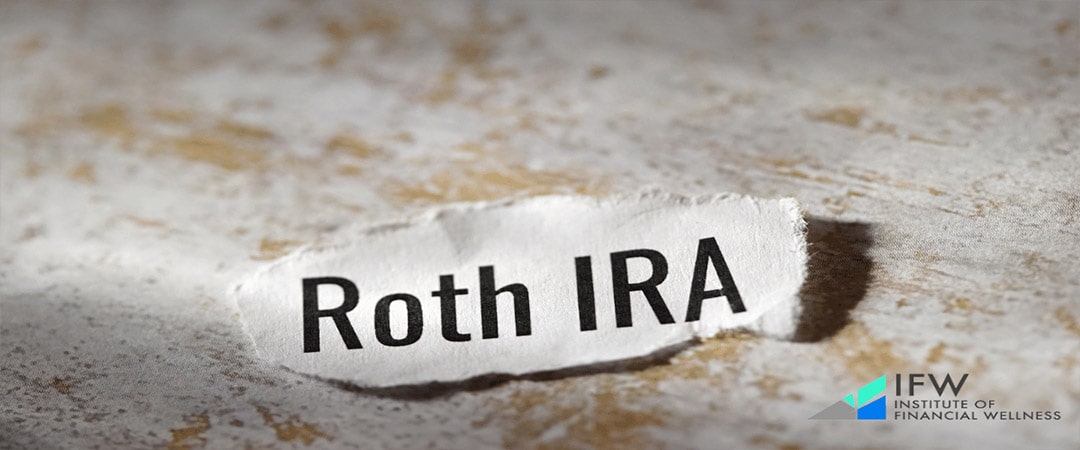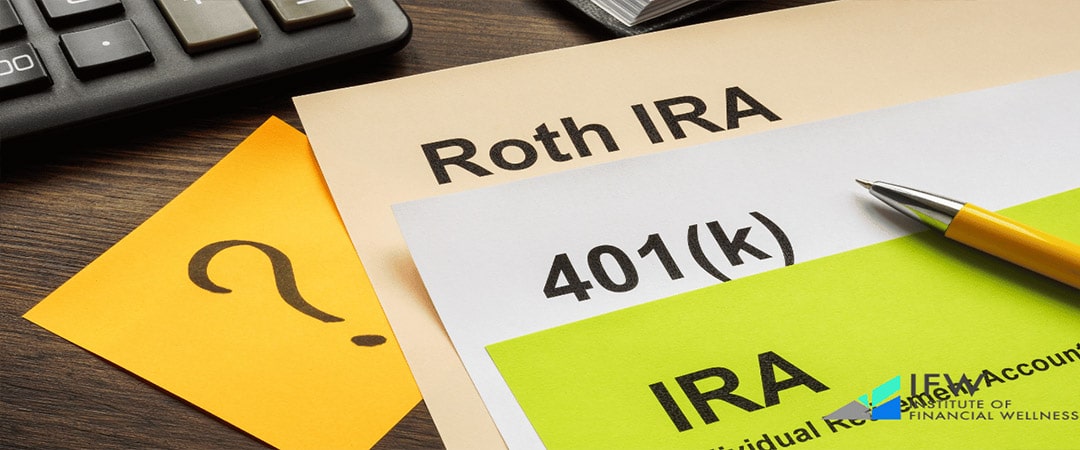“As the year draws to a close, it’s not just an ending; it’s a new beginning. Embrace the possibilities, cherish the memories, and welcome the adventures that lie ahead.” – Unknown
As we bid farewell to another year, it’s the perfect moment to ensure your financial future is gearing up for success! This is the perfect time to make sure your Roth IRA contributions are as optimized as possible before the 2023 deadline. From understanding contribution limits and deadlines to devising strategies for maximizing retirement savings, it’s a good idea to get a helpful insight into what you need to ensure that your financial future looks secure! Remember: it’s all about making maximum use of Roth IRAs and their associated contributions and abiding by any applicable deadlines & restrictions in order to stay on track.
Key Takeaways
- Deadlines for 2023 Roth IRA contributions are April 15, 2024.
- Contributions to a Roth IRA can be maximized through catch-up contributions and backdoor strategies.
- Withdrawals from a Roth IRA may incur taxes or penalties unless they meet certain criteria, such as the five-year rule and exceptions like first-time home purchases.
Understanding Roth Deadline 2023
Unravel the secrets to a rock-solid retirement plan by mastering the art of Roth IRA contributions and their crucial deadlines! In 2022, the tax year dance closed its curtains on April 18th, but beware, the rhythm might vary for self-employed maestros and other IRA virtuosos like SIMPLE plans. Stick to the beat to avoid penalties and make those timely deposits to supercharge your savings. Dive into the income limits playbook to ensure you hit the sweet spot—contributing just enough without breaking any tax law rules. It’s not just about deadlines; it’s about orchestrating a financial performance that steals the show!
Key Dates for 2023 Contributions
It’s important to be aware of the contribution deadline dynamics for IRA limits, as they reset annually. When the contribution limits roll over each year, any new contributions are applied toward the following year’s limits, and the previous year is considered closed. This deadline structure allows individuals to make contributions until the tax deadline of the subsequent year.
Effectively, taxpayers can allocate their IRA contributions for a specific year from January 1 to the Tax Day of that year, providing a four-month overlap. For instance, in 2022, taxpayers could contribute towards the limit for that tax year starting January 1, 2022, and the deadline for these contributions was extended until April 17, 2023, when 2022 taxes were due. Similarly, from January 1, 2023, taxpayers can commence contributions towards their 2023 tax year limit, with the deadline extending until the tax day in 2024 [1]. This structure offers flexibility, enabling individuals to maximize their contributions within the given time frame strategically.
Extension Options

It is important to comprehend the effects of contributing too much when considering Roth IRA contributions. If you do not realize your surplus payments before submitting your taxes, you may be penalized 6% every year on those extra funds until they are taken out of the account [2]. There’s a deadline for rectifying such errors, which corresponds with tax filing deadlines. Fortunately, it’s possible to take advantage of extensions if necessary in regard to both SEP and HSA IRAs so that contribution limits can still be met. To make use of these options, though, one needs to understand their implications beforehand, allowing them greater control over their overall Roth IRA contributions and avoiding any penalties along the way.
Roth IRA Contribution Limits for 2023

In 2023, those younger than 50 will be able to contribute up to $6,500 annually into a Roth IRA account. Those aged fifty and above have an additional contribution limit of $1,000 – referred to as the catch-up allowance – meaning they can make contributions that total up to $7,500 for the tax year [3]. Modified Adjusted Gross Income (MAGI) is used as a criterion when calculating allowable contributions. This means one’s retirement savings capacity may be significantly affected by these limits, along with any tax advantages resulting from using them. To gain knowledge regarding how much you could contribute in terms of your age group or income level under IRAs during this period, it would help if we looked at both types of restrictions more closely.
Age-Based Contribution Limits
Roth IRAs have an increased contribution limit for those 50 and over. These special catch-up contributions were introduced as part of the Taxpayer Relief Act. In 2023, that means individuals aged under 50 can contribute up to $6,500, while those above have a maximum allowed amount of $7,500 [4]. By taking advantage of these benefits offered by Roth IRAs, you are able to optimize your retirement savings while still reaping all tax advantages associated with them. It is important to make use of this ability so you don’t miss out on any opportunity in order to maximize your contributions each year!
Income Restrictions and Phase-Out Ranges
Those who wish to make contributions towards a Roth IRA must consider their filing status and Modified Adjusted Gross Income (MAGI) for 2023. For individuals with MAGIs at or below $153,000 (single) or $228,000 (married filing jointly), the income limit qualifies them to contribute up to the maximum contribution in accordance with phase-outs that may lower it [5]. It is necessary if one wishes to receive tax benefits from making these contributions into an IRA account. Those whose earnings exceed this threshold can explore other strategies, such as backdoor Roth IRAs, which will still facilitate saving for retirement even after exceeding set limits.
Strategies for Maximizing Roth IRA Contributions

Contributing to a Roth IRA can be beneficial in preparing for retirement, as the growth will not incur taxes. One doesn’t need to worry about income limits when contributing since they are unrestricted. Not only this but withdrawing funds from it doesn’t carry any early withdrawal penalties, unlike traditional IRAs, so individuals have more flexibility if needed.
Is there a way to maximize contributions? The answer is yes! Two strategies that help maximize contributions include catch-up and backdoor ones, regardless of income level or age, respectively.
Catch-Up Contributions
Individuals aged 50 or older can make an additional contribution to their Roth IRA beyond the regular limit of $6,000 with a catch-up allowance of $1,000. This would enable them to put aside up to $7,500 annually for retirement savings. The contributions are post-tax, and withdrawals, including any extra deposits made as part of this scheme, remain tax-exempt from then on. Making use of the catch-up option allows investors of all ages, but especially those nearing retirement age, to maximize investments in their Roth account that might result in increased returns over time.
Backdoor Roth IRA Contributions
Unlock the financial VIP room with Roth IRA contributions—a game-changer for high rollers in the income arena! Elevate your savings strategy with the Backdoor Roth IRA move, where the limits that hold back traditional IRAs and 401(k)s are mere speed bumps. It’s not just about contributing; it’s about turbocharging your savings and enjoying the sweet tax advantages that come with this high-income-friendly retirement plan. Let’s rewrite the rules and make your wealth-building journey a blockbuster!
To make this possible and complete their backdoor savings incentive match plans each year (also known as a “backdoor” Roth IRA), an individual must first make non-deductible contributions towards a Traditional IRA account, which can then be converted into a Roth one by way of conversion process afterward. This strategy ultimately allows higher-earning individuals greater access to protect themselves against taxation during retirement while growing their financial assets in the most profitable manner possible. All without impacting contribution limits are seen within other avenues such as those found in both standard IRAs or through employer-sponsored 401 k programs that may cap amounts contributed annually on behalf of employers regardless.
Comparing Roth IRAs with Other Retirement Accounts

When assessing the contribution limits of Roth IRAs compared to other retirement accounts such as traditional IRAs, SEP IRAs, and Solo 401(k) plans intended for self-employed persons or small business owners, there are some distinctions that can be made. Those eligible to contribute funds to a Roth IRA must meet certain income requirements. These same restrictions do not apply to traditional IRAS and those designed for entrepreneurs like SEPIR As or Solo 401ks, which offer higher total contributions due to employer involvement.
Traditional IRAs
Nonetheless, you should not look away from analyzing the difference between Traditional IRAs and Roth IRAs. Did you know that the contribution limits for both types in 2021 were $6,000 or $7,000 if you were over 50 by December 31st of that year? No income restrictions apply when contributing to a traditional IRA account. These accounts provide tax-deductible contributions while also allowing any growth within them to be deferred from taxation until withdrawals occur.
In contrast with this model, there are Roth IRAs, where one pays taxes upfront but then enjoys all future earnings being exempt from taxation upon withdrawal later down the road – making these kinds of plans an attractive choice, too, depending on individual financial circumstances and objectives for their retirement savings goal.
SEP IRAs and Solo 401(k) Plans
Roth IRAs, SEP IRAs, and Solo 401(k) plans are retirement accounts created for self-employed individuals or small business owners. The major differences between these types of investments are their eligibility criteria, contribution limits, and tax treatment. For example, the annual contribution limit for a SEP IRA in 2023 is lower than 25 percent of compensation. While that number increases to $66 000 with a solo 401K plan (or to 73 500 if you’re over 50).
However, when it comes down to deciding which option works best amongst Roth IRAs and other similar investment vehicles, there’s no one answer for everyone, as each person has unique financial goals they need to consider carefully before making any decisions on contributions. Understanding how this type of savings account compares enables everyone to make wise choices regarding their future security through responsible planning strategies.
Roth IRA Withdrawal Rules and Penalties

In the case of withdrawing from a Roth IRA, knowing the rules is key in order to take advantage of its tax benefits. Navigating the investment game? Brace yourself for the rules! Before the golden age of 59 1/2, withdrawing your earnings might set off a tax and penalty fireworks show—unless you’ve got a golden ticket in the form of qualified withdrawal conditions. But wait, there’s a twist! Contributions are your financial chameleons, free to dance out of your account for any reason, any time, no taxes attached. Just remember the five-year rule—these investments need to hang around, making your financial story more captivating!
The Five-Year Rule
The five-year rule for Roth IRAs outlines that when a person reaches 59 1/2 years of age, and the IRA has been opened for at least 5 tax periods, there will be no penalty or taxes owed on any earnings withdrawn. It’s possible to withdraw contributions from these accounts without consequence, even before hitting this timeline. Certain exemptions exist, such as death, disability, and qualified first homebuyer distributions, which may alter this threshold timeframe as well.
When all conditions are met (a five-year period being one), anyone over 59 1/2 can take out their money, including earned amounts, with zero penalties, exempting those special aforementioned scenarios.
Exceptions to Early Withdrawal Penalties
As with many things in life, there are exceptions, and Roth IRAs offer several of them to the 10% early withdrawal penalty for those aged 50 and older. A first-time home purchase can be funded using up to $10,000 of investment earnings without incurring any penalties according to regulations set by the Internal Revenue Service (IRS). Higher education expenses like tuition fees are exempt from this rule when drawn out of a Roth IRA before attaining age 59 1/2. Last but not least, withdrawals made due to permanent disability or death also fall under this exemption category applicable for all over fifty Roth IRA account holders.
The Institute of Financial Wellness
For individuals looking to their understanding of Roth IRAs and other means for retirement planning, the Institute of Financial Wellness provides a wealth of resources. At this multi-media network, we offer helpful advice as well as services aimed at aiding users in achieving financial goals through education. For more information on these topics, you can visit our website to learn about different types of IRAs and how they work or contact a financial advisor.
Full Summary
It’s essential to be knowledgeable of Roth IRA contribution limits, cut-off dates, and how to make the most out of contributions in order for a secure financial future. Taking immediate steps now will ensure that you don’t miss any opportunities when it comes time for year-end deadlines so your retirement savings stay maximized. A professional financial advisor will be able to guide you through these contributions.
Frequently Asked Questions
Are Roth conversions still allowed in 2023?
It is still possible to do Roth conversions in 2023, with the contribution limit for that year being either $6,500 or $7,500 if you’re 50 years old and above. This maximum amount can be applied when adding funds to all of your IRAs combined.
Is it too late to open a Roth IRA?
You can still open a Roth IRA without restriction up until April 18th, 2023. Although there are income and contribution limits investors need to be mindful of before they start contributing, no age limit exists. You have time to make contributions by the tax deadline on April 18 this year, too!
What are the Roth IRA contribution limits for 2023?
For those under the age of 50, Roth IRA contribution limits in 2023 stand at $6,500, with an extra catch-up allowance of $1,000 provided for individuals aged fifty and over.




